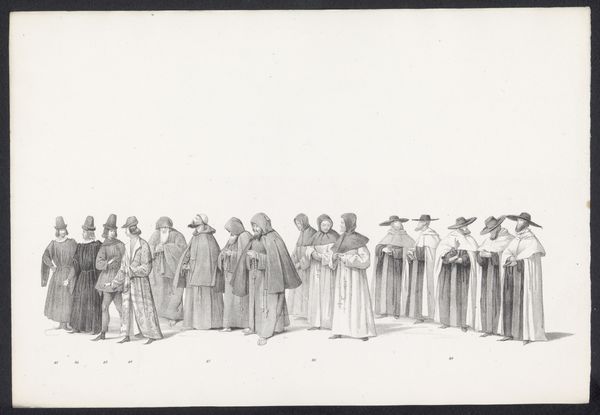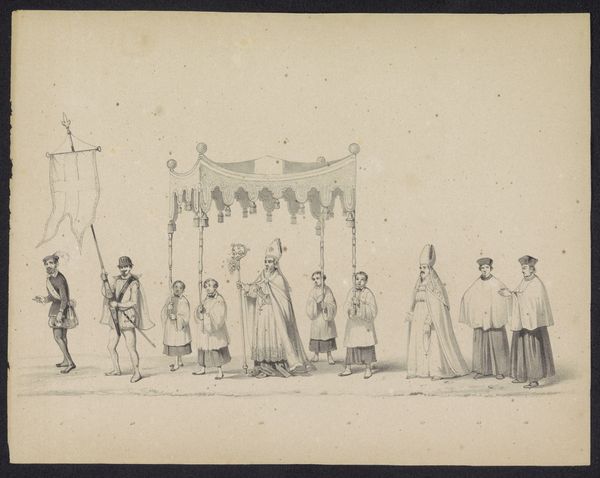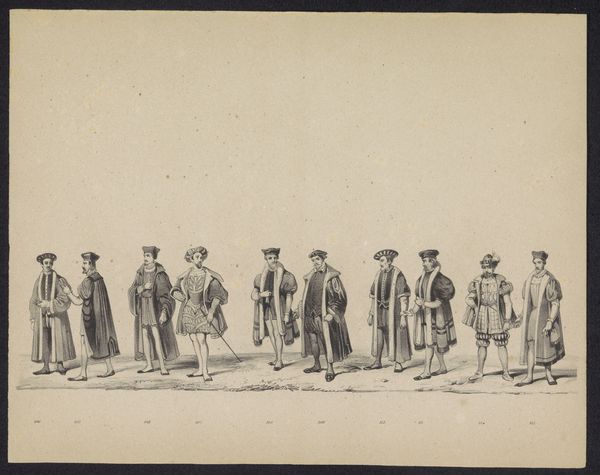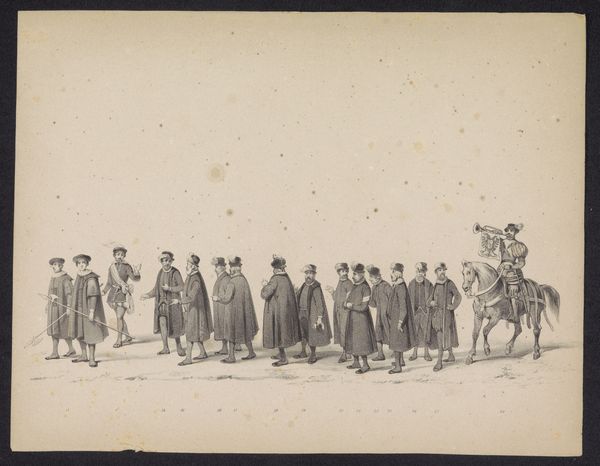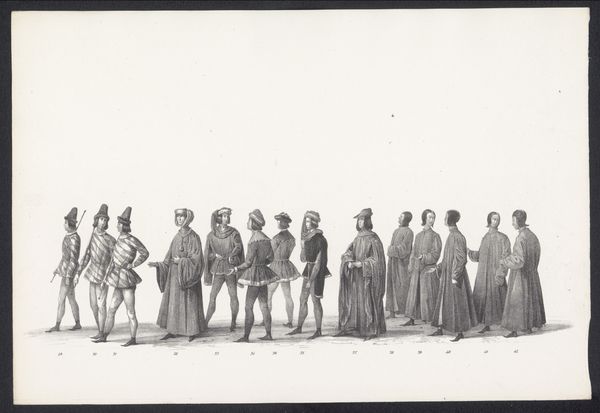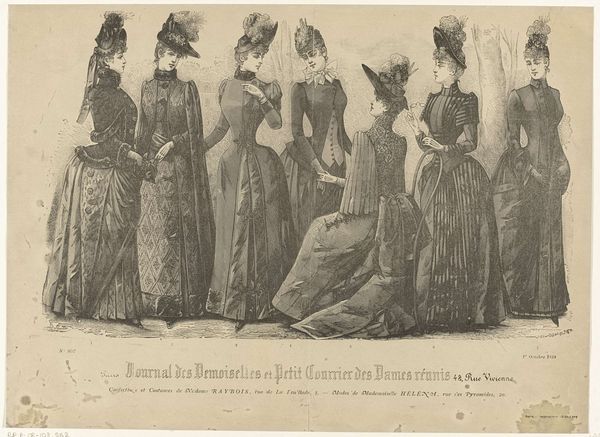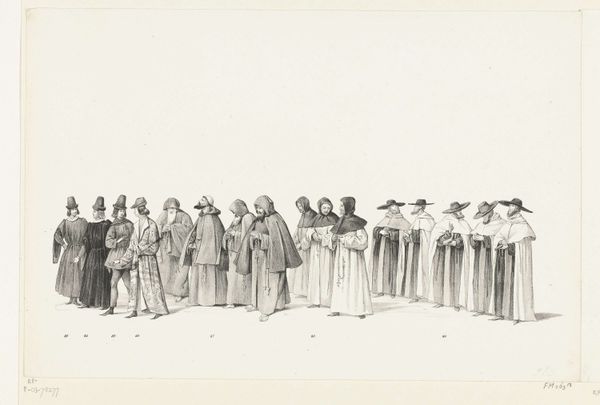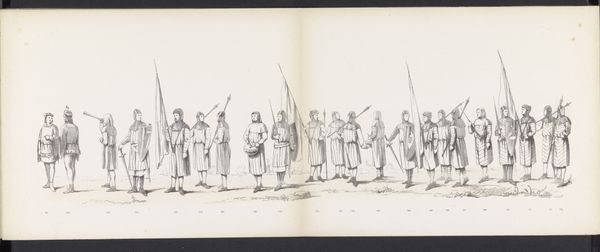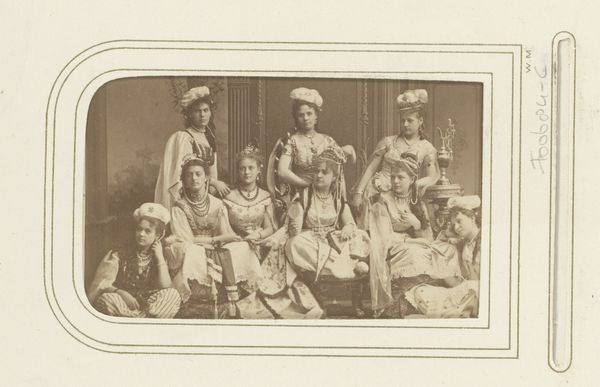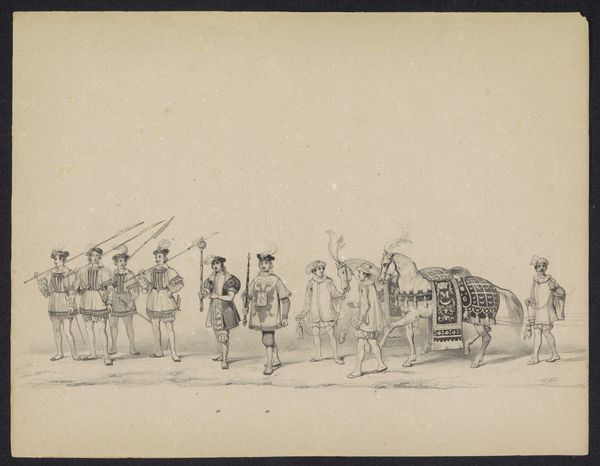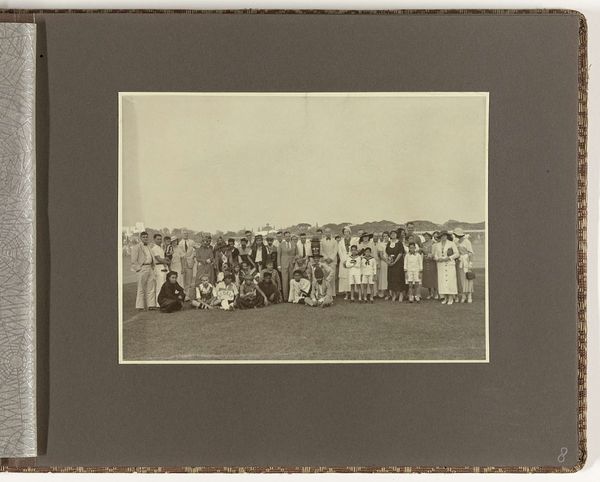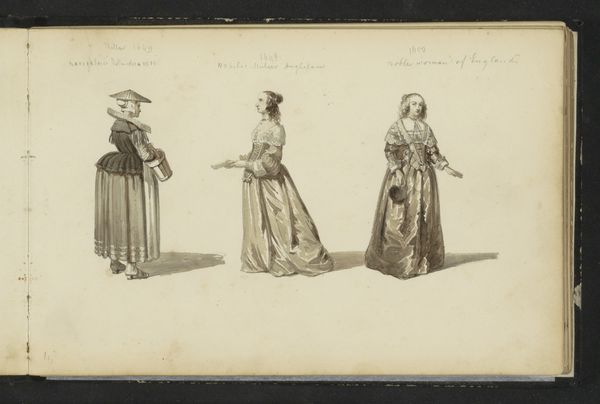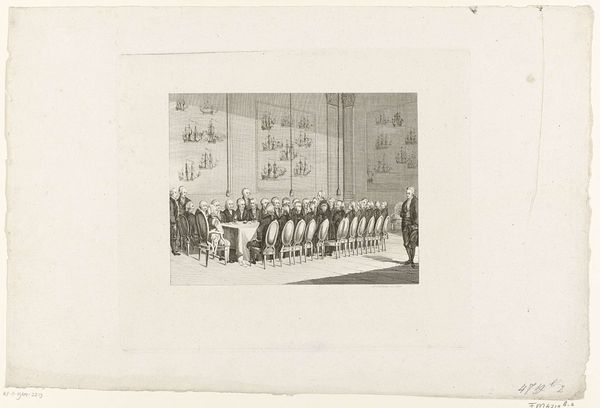
Maskerade van de Utrechtse studenten, 1846 (plaat 11) 1847
0:00
0:00
drawing, print, ink, pencil
#
drawing
#
narrative-art
# print
#
figuration
#
ink
#
pencil
#
genre-painting
#
academic-art
#
watercolor
Dimensions: height 240 mm, width 310 mm
Copyright: Rijks Museum: Open Domain
Curator: Immediately, I'm struck by the understated elegance of this scene, so quiet yet it suggests a secret ritual, a parade perhaps. The monochromatic palette gives it such solemn feel, doesn't it? Editor: It does. The artwork is entitled "Maskerade van de Utrechtse studenten, 1846 (plaat 11)", created in 1847 by Carel Christiaan Antony Last. Executed using pencil and ink, it depicts a procession, probably of Utrecht students masked. Curator: Ah, masked students, so this serious procession that caught my eye is actually playful, the masking creating a stage, the procession a set of gestures freighted with symbolism. The robes evoke both religious authority and scholarly pursuit, almost an overlap. Editor: It does. Last came from a prominent family of artists. He studied in The Hague and specialized in genre scenes and historical subjects. Knowing the social context, student life was undergoing significant changes. The academic world had a particular status. Curator: Indeed. I'm thinking about the weight of clothing depicted here and what they symbolize: Status. Knowledge. Privilege. And the masks… well, a carnival and festival in many ways inverted power while also reaffirming it. Who are these people "behind the mask", literally and figuratively? Editor: This print likely circulated among a specific social group. Consider how the museum displays it today – placing this image within a broader narrative about Dutch history, education, or even the history of satire and visual culture. Curator: I find myself lingering over those masked faces – or the implication of faces hidden, wanting to know more about their individual stories, to peel back those layers of disguise. Even in the past, the idea of concealing something is fascinating to explore! Editor: Right. For me, considering this print in a public collection, like the Rijksmuseum where it is currently held, highlights its enduring power to spark such considerations on social change. It's far from just a depiction; it actively invites interpretations of the past in our present moment. Curator: Yes, after this dialogue, the print seems to have increased depth in meanings for me: visual evidence of the cultural tensions between established hierarchies and emerging freedoms. Editor: Precisely, art provides insights into shared social life, bridging historical contexts.
Comments
No comments
Be the first to comment and join the conversation on the ultimate creative platform.
